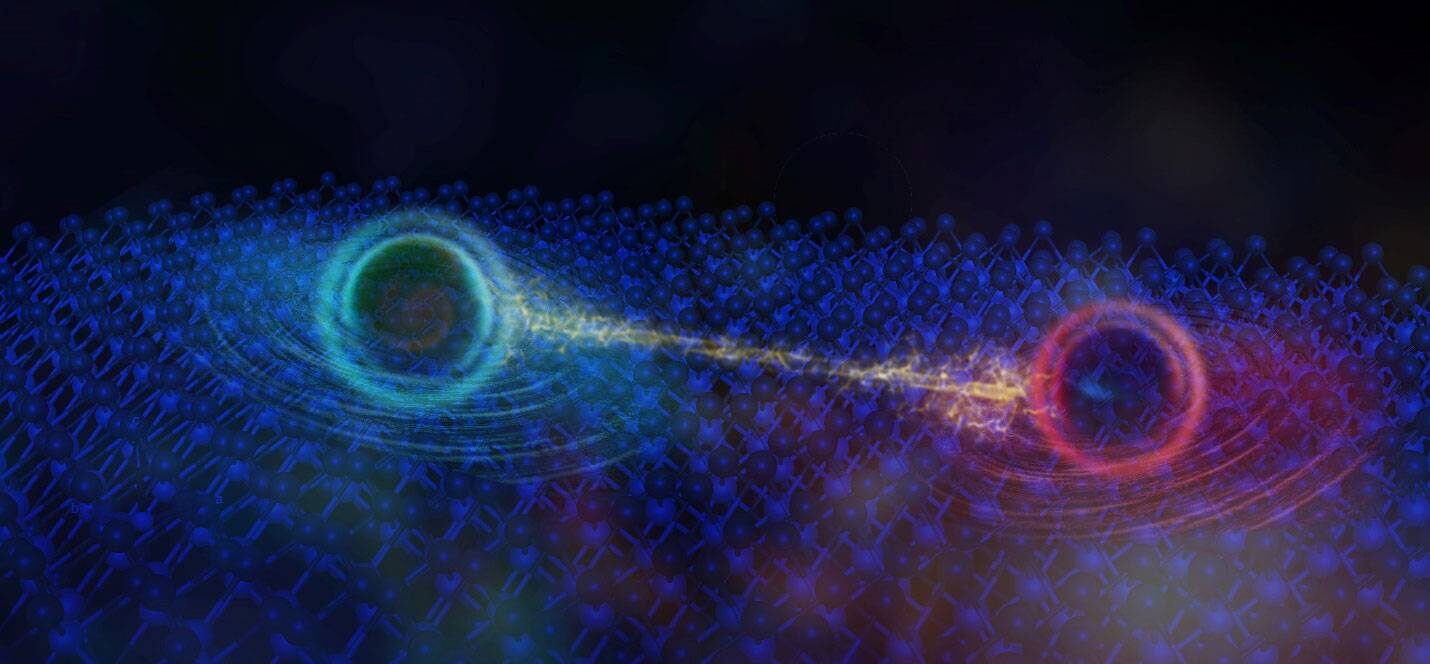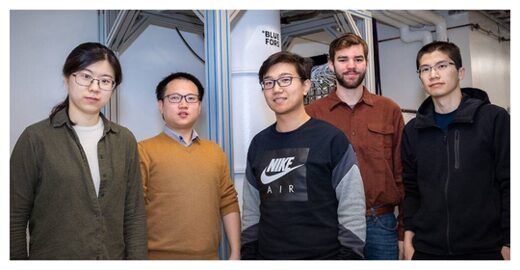The discovery challenges a long-held distinction between metals and insulators, because in the established quantum theory of materials, insulators were not thought to be able to experience quantum oscillations.

The observation of quantum oscillations has long been considered a hallmark of the difference between metals and insulators. In metals, electrons are highly mobile, and resistivity — the resistance to electrical conduction — is weak. Nearly a century ago, researchers observed that a magnetic field, coupled with very low temperatures, can cause electrons to shift from a "classical" state to a quantum state, causing oscillations in the metal's resistivity. In insulators, by contrast, electrons cannot move and the materials have very high resistivity, so quantum oscillations of this sort are not expected to occur, no matter the strength of magnetic field applied.
The discovery was made when the researchers were studying a material called tungsten ditelluride, which they made into a two-dimensional material. They prepared the material by using standard scotch tape to increasingly exfoliate, or "shave," the layers down to what is called a monolayer — a single atom-thin layer. Thick tungsten ditelluride behaves like a metal. But once it is converted to a monolayer, it becomes a very strong insulator.
"This material has a lot of special quantum properties," Wu said.
The researchers then set about measuring the resistivity of the monolayer tungsten ditelluride under magnetic fields. To their surprise, the resistivity of the insulator, despite being quite large, began to oscillate as the magnetic field was increased, indicating the shift into a quantum state. In effect, the material — a very strong insulator — was exhibiting the most remarkable quantum property of a metal.
"This came as a complete surprise," Wu said. "We asked ourselves, 'What's going on here?' We don't fully understand it yet."
Wu noted that there are no current theories to explain this phenomenon.
Nonetheless, Wu and his colleagues have put forward a provocative hypothesis — a form of quantum matter that is neutrally charged. "Because of very strong interactions, the electrons are organizing themselves to produce this new kind of quantum matter," Wu said.
But it is ultimately no longer the electrons that are oscillating, said Wu. Instead, the researchers believe that new particles, which they have dubbed "neutral fermions," are born out of these strongly interacting electrons and are responsible for creating this highly remarkable quantum effect.
Fermions are a category of quantum particles that include electrons. In quantum materials, charged fermions can be negatively charged electrons or positively charged "holes" that are responsible for the electrical conduction. Namely, if the material is an electrical insulator, these charged fermions can't move freely. However, particles that are neutral — that is, neither negatively nor positively charged — are theoretically possible to be present and mobile in an insulator.

The Princeton team plans further investigation into the quantum properties of tungsten ditelluride. They are particularly interested in discovering whether their hypothesis — about the existence of a new quantum particle — is valid.
"This is only the starting point," Wu said. "If we're correct, future researchers will find other insulators with this surprising quantum property."
Despite the newness of the research and the tentative interpretation of the results, Wu speculated about how this phenomenon could be put to practical use.
"It's possible that neutral fermions could be used in the future for encoding information that would be useful in quantum computing," he said. "In the meantime, though, we're still in the very early stages of understanding quantum phenomena like this, so fundamental discoveries have to be made."
In addition to Wu and Wang, the team included co-first authors Guo Yu, a graduate student in electrical engineering, and Yanyu Jia, a graduate student in physics. Other key Princeton contributors were Leslie Schoop, assistant professor of chemistry; Robert Cava, the Russell Wellman Moore Professor of Chemistry; Michael Onyszczak, a physics graduate student; and three former postdoctoral research associates: Shiming Lei, Sebastian Klemenz and F. Alexandre Cevallos, who is also a 2018 Princeton Ph.D. alumnus. Kenji Watanabe and Takashi Taniguchi of the National Institute for Material Science in Japan also contributed.
"Landau quantization and highly mobile fermions in an insulator," by Pengjie Wang, Guo Yu, Yanyu Jia, Michael Onyszczak, F. Alexandre Cevallos, Shiming Lei, Sebastian Klemenz, Kenji Watanabe, Takashi Taniguchi, Robert J. Cava, Leslie M. Schoop, and Sanfeng Wu, was published Jan. 4 in the journal Nature (DOI: 10.1038/s41586-020-03084-9).
This work was primarily supported by the National Science Foundation (NSF) through the Princeton University Materials Research Science and Engineering Center (DMR-1420541 and DMR-2011750) and a CAREER award (DMR-1942942). Early measurements were performed at the National High Magnetic Field Laboratory, which is supported by an NSF Cooperative Agreement (DMR-1644779), and the State of Florida. Additional support came from the Elemental Strategy Initiative conducted by the Ministry of Education, Culture, Sports, Science and Technology of Japan (JPMXP0112101001), the Japan Society for the Promotion of Science's KAKENHI program (JP20H00354) and the Japan Science and Technology Agency's CREST program (JPMJCR15F3). Further support came from the U.S. Army Research Office Multidisciplinary University Research Initiative on Topological Insulators (W911NF1210461), the Arnold and Mabel Beckman Foundation through a Beckman Young Investigator grant, and the Gordon and Betty Moore Foundation (GBMF9064).



Reader Comments
to our Newsletter